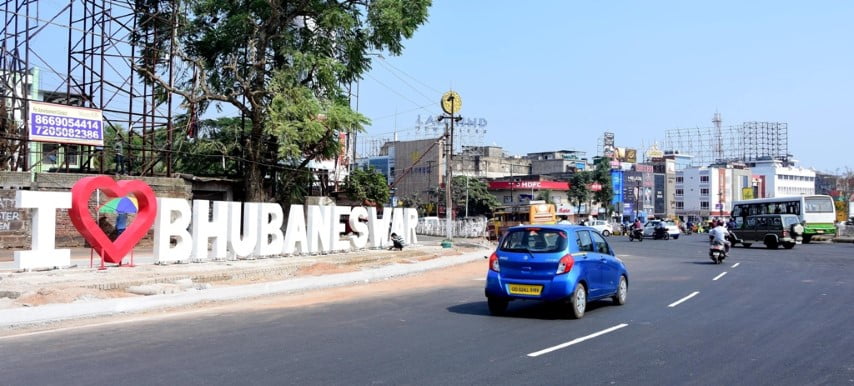Bhubaneswar Can Drive Odisha Cities To Better Living & Future! Here’s How

Do you know that 55% of the global population currently lives in cities and towns and that the number is growing every day? This rapid and often unplanned urbanization increases the burden on the environment. On the other hand, urbanisation and innovation are the keys for cities to grow and prosper.
Despite all the challenges, cities are the catalysts for change. For instance, their solutions to common challenges, such as social exclusion, can reach far beyond their urban boundaries and help whole countries achieve common global goals.
In reality, when cities grow, the challenges also grow regarding the complex issues of social equality, cultural diversity, poverty, climate change and a healthy environment.
And another emerging challenge is urban mobility in which residents are exposed to traffic jams, air pollution from emissions, insufficient waste management, inadequate infrastructure, environmental degradation and poor housing. This is common for all cities across the globe and so it is in Odisha.
Despite all the odds, however, urbanization can be a critical tool for sustainable development, if it is done right. By ensuring that cities are planned, designed, financed, developed, governed and managed properly, it is possible to use urbanization to achieve global goals of development. Nearly two-third of the people on Earth will live in cities by 2050. Therefore, solving the issues of poverty and climate change has to start with the cities.
In reality, smart and cities are not always inclusive. Therefore, these cities will need innovation to achieve sustainable and inclusive urban prosperity. Also, the cities must ensure that the benefits are shared and that no urban area is left out of innovations and knowledge. Perhaps, network of cities like Wikipedia and Google search engine are the best examples of how to ensure that no city is left behind.
In the meantime, cities account for 65% of the energy demand and 75% of carbon dioxide emissions globally. But they also have enormous potential to increase energy efficiency. Between 2015 and 2018, the number of cities supplied by at least 70% renewable energy doubled. Innovating on how we plan, build, power and move across our cities is crucial for climate action and a better life for all.
At the same time, the depletion of green cover has triggered global urban water crisis. This is because trees are responsible for 40% of the Earth’s annual rainfall from evapotranspiration, which happens when trees “exhale” moisture through their leaves. In other words, cities need innovations in their green infrastructure management to ensure they don’t run out of water in taps.
Today, more than half of the global population lives in cities and uses nearly 80% of the world’s resources. This unprecedented urban growth along with changing climate, demands basic fundamental steps to improve the relationship between cities and nature.
Similarly, public places provide cities the room to work, to be social and to contribute to a thriving ecosystem. More public spaces can help absorb carbon, produce green energy, contribute to food security needs and also enable exploration of locally suitable options.
Cities need large scale investments to develop and maintain infrastructure and services such as urban transport, water supply, sanitation and solid waste management. Most of these investments will require the state and the nation to create an environment that enables the involvement of the private sector with the local government.
Technology used right can improve urban inclusion. Using technology, cities across the globe are rebuilding their urban areas through social networks and special apps. Recently in Seferihisar, Turkey, young people used apps to participate in the design and construction of their own youth summer camp in early 2019. Such models are too crucial for Bhubaneswar, where most residents are now connected on social networks.
Today we mark World Cities Day. It is an opportunity to look at how innovation can enhance the quality of life in cities and improve the urban environment. Similarly, through urban safety and good governance, cities may drive sustainable development at the local level. The Odisha government’s 5Ts vision of Mo Sarkar is crucial for addressing various urban challenges using innovation in city management.
The 5Ts — team work, technology, transparency, transformation and time l — are the five factors on which Mo Sarkar will drive Odisha’s needs for innovation. Innovation alongside the 5Ts can help the state to plan more livable cities, neighbourhoods and public spaces as part of the vision for “Better Cities for Better Life”.
After its establishment as the capital city, Bhubaneswar has played a major role in Odisha’s urbanisation process. So how Bhubaneswar harnesses it’s involvement with 5Ts and innovation will affect Odisha’s overall potential for sustainable growth. However, Bhubaneswar as a city and Odisha have vast differences, but are also similar on the basis of the speed of their respective urbanisation processes.
From Paris and São Paulo to Stockholm and Ningbo to Bhubaneswar, cities are leading the charge on building a resilient & low-carbon future for all. Alongside, they engage young people in sports to boost public health and prevent violence and drug abuse in urban communities.
The sustainable development for cities is not a sprint, it’s a marathon. At the same time, they are laboratories for fresh ideas that can ensure urban spaces in cities are sustainable and inclusive today, tomorrow and forever. That’s why the actions of cities — not nations — will be the key to survival on Earth.
Thursday, 31 October, is #WorldCitiesDay. So act today on creating a better city for a better future.
[The writer is a town planner]
[Disclaimer: The views expressed by the author are his own and do not necessarily represent that of the website]

Comments are closed.